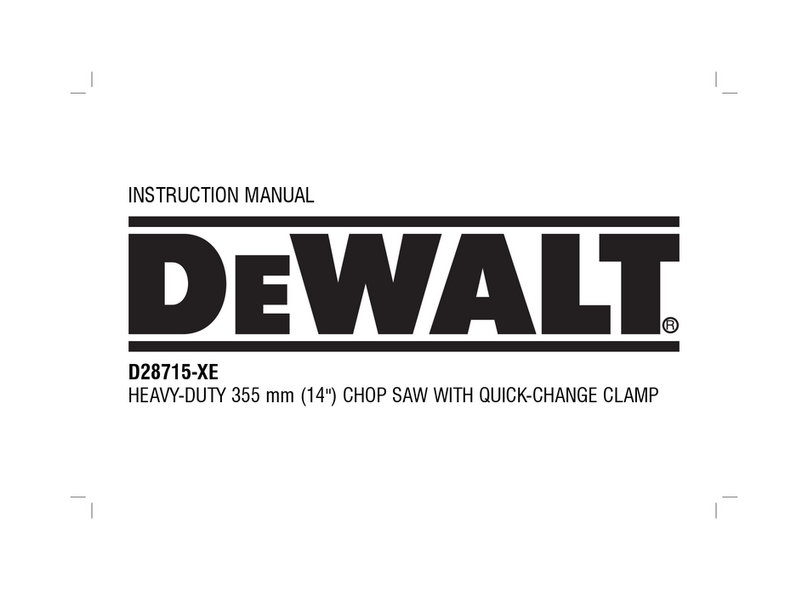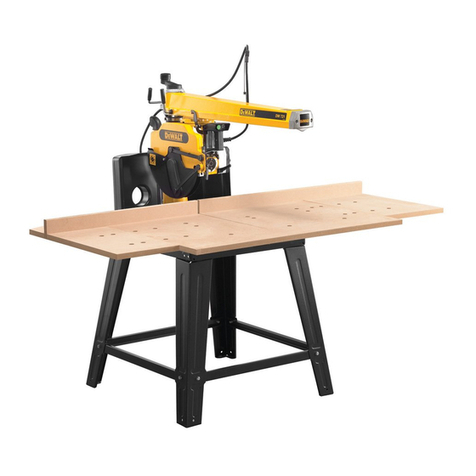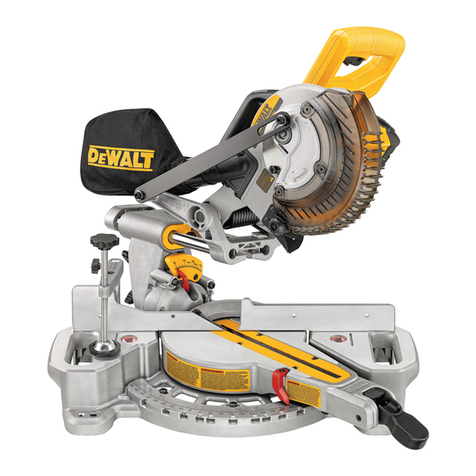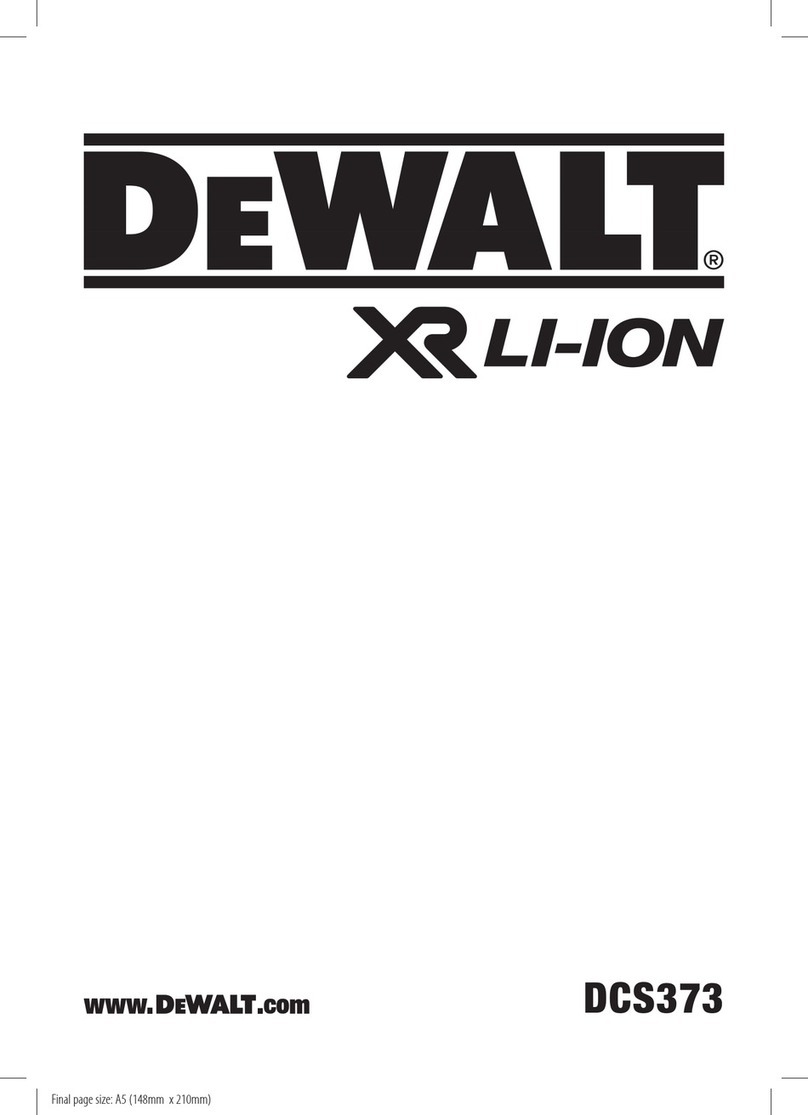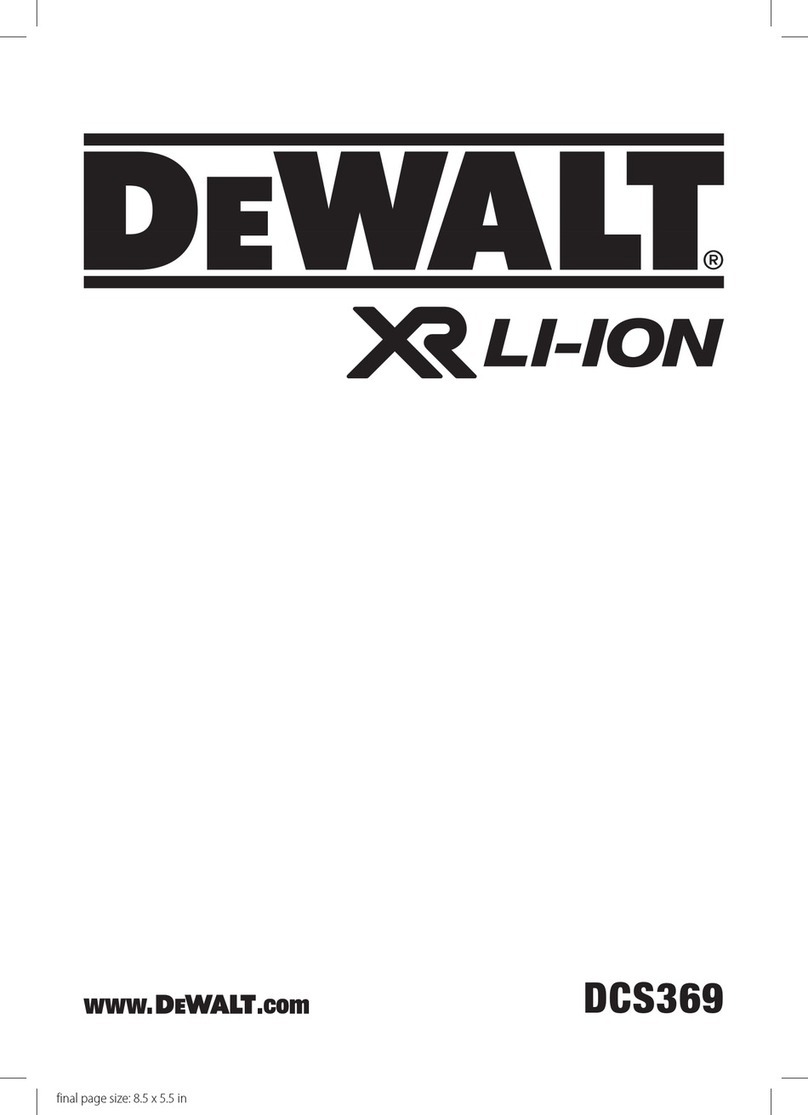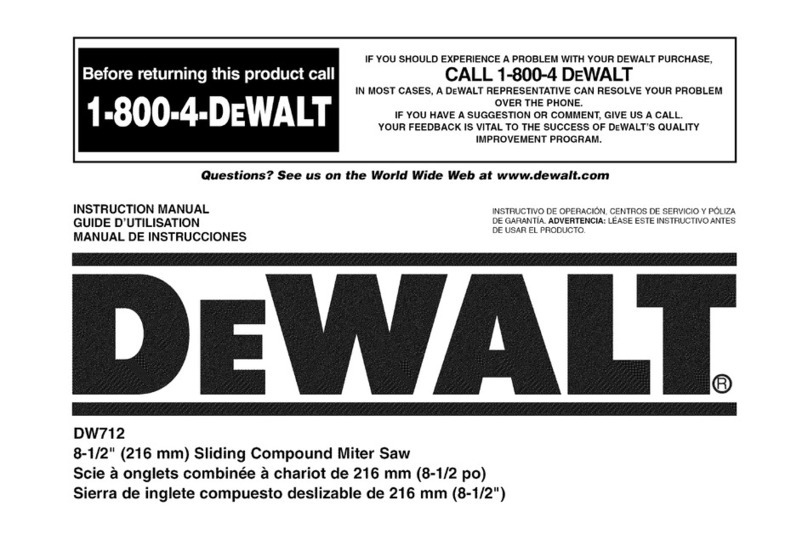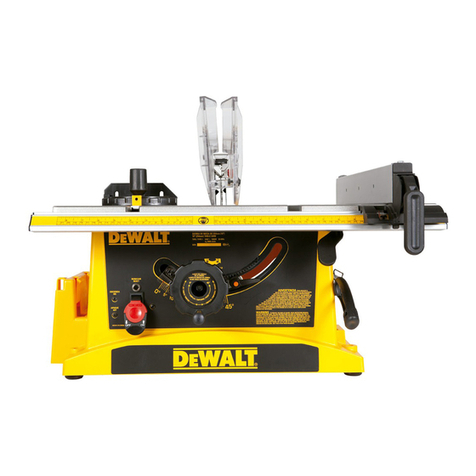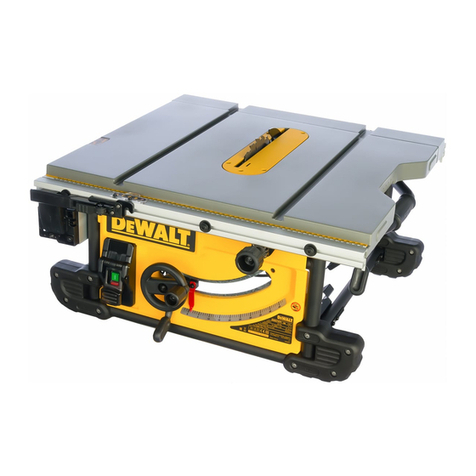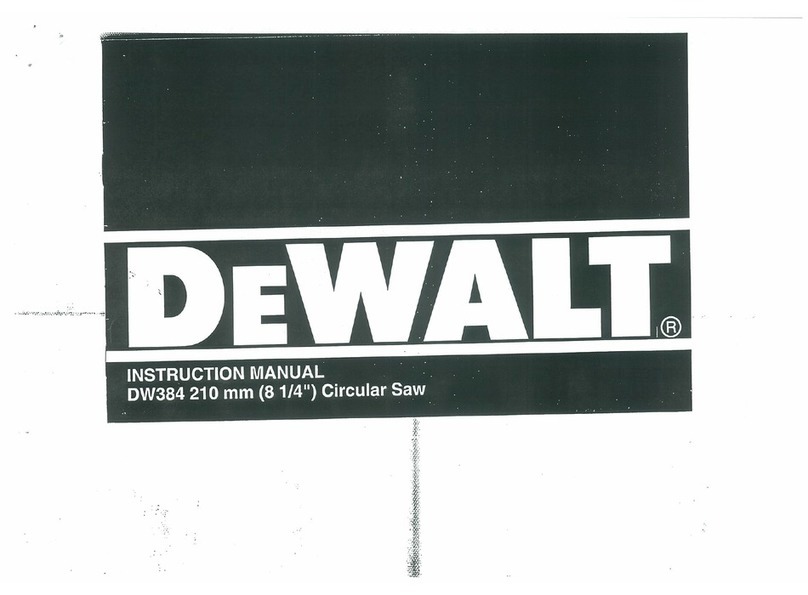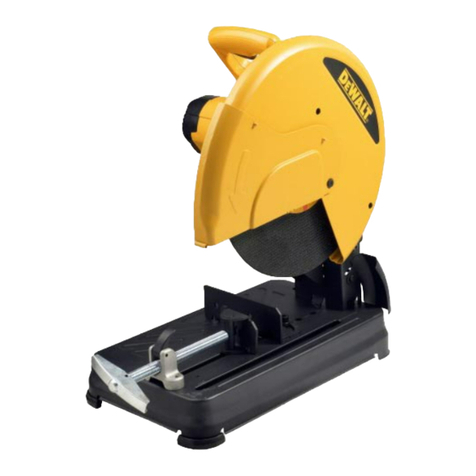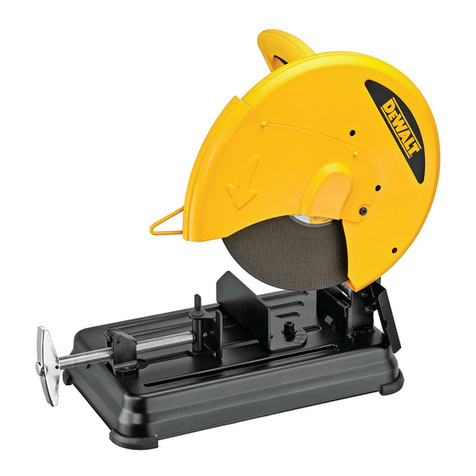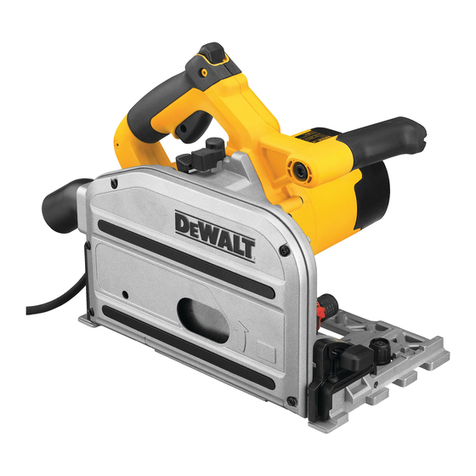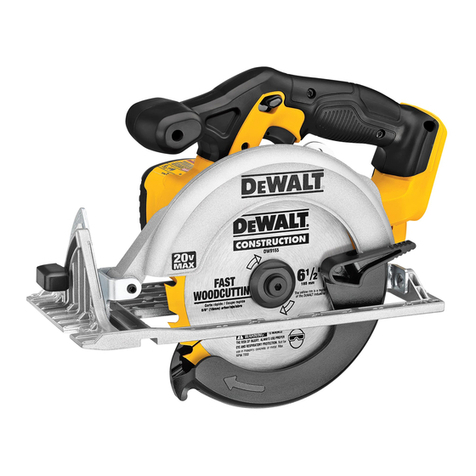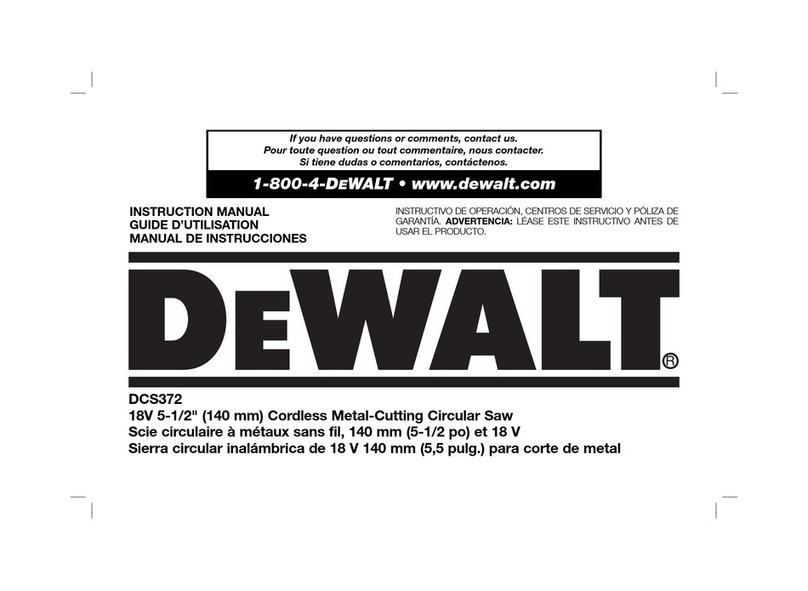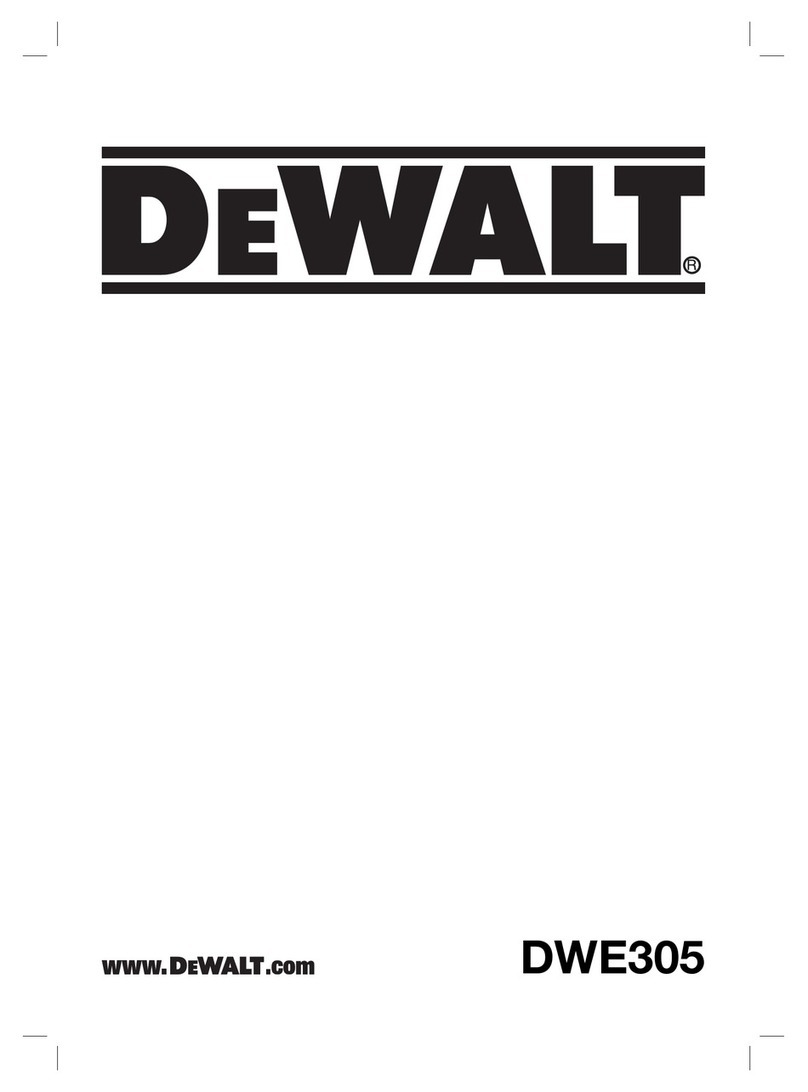English
2
•CHECK DAMAGED PARTS. Before further use of the tool, a
guard or other part that is damaged should be carefully checked
to determine that it will operate properly and perform its intend-
ed function — check for alignment of moving parts, binding of
moving parts, breakage of parts, mounting, and any other con-
ditions that may affect its operation. A guard or other part that is
damaged should be properly repaired or replaced.
•NEVER LEAVE TOOL RUNNING UNATTENDED. TURN
POWER OFF. Don’t leave tool until it comes to a complete stop.
•REPLACEMENT PARTS. When servicing use only identical
replacement parts.
•TO REDUCE THE RISK OF ELECTRIC SHOCK:
a. This equipment may have a polarized plug (one blade is
wider than the other.) This plug will fit in a polarized outlet
only one way. If the plug does not fit, contact a qualified
electrician to install the proper outlet.
b. The tool may be equipped with a 3-prong grounding type
plug. This plug is to be used in a grounded outlet only. If
the plug does not fit, contact a qualified electrician to
install the proper outlet.
c. Do not alter the plug in any way.
Additional Safety Rules for Chop Saw
• Always wear proper eye and respiratory protection.
•Before using, inspect the cutting wheel for cracks or flaws.
If such a crack or flaw is evident, discard the wheel. The
wheel should also be inspected whenever you think the tool
may have been dropped. Flaws may cause wheel breakage.
• When starting the tool with a new or replacement wheel or if
you are unsure of the condition of the wheel, hold the tool in
a well protected area and let it run for one minute. If the wheel
has an undetected crack or flaw, it should burst in less than one
minute. Never start the tool with a person in line with the wheel.
This includes the operator.
• In operation, avoid bouncing the wheel or giving it rough
treatment. If this occurs, stop the tool and inspect the wheel for
cracks or flaws.
• Clean your chop saw periodically following the procedure in this
manual.
• Do not remove wheel guards or base.
•ALWAYS USE THE VISE OR SPECIAL FIXTURE TO CLAMP
WORK SECURELY. Other aids such as spring, bar, or C-clamps
may be appropriate for certain sizes and shapes of workpiece.
Use care in selecting and placing these clamps and make a dry
run before making a cut.
• Use only 14" type 1 wheels rated at 4100 rpm or higher.
• Allow cut off parts to cool before handling.
• Do not attempt to cut wood or plastic with this tool.
•NEVER CUT MAGNESIUM WITH THIS TOOL.
• Use chop saw in a well-ventilated area.
• Turn chop saw off before removing any pieces from the base.
•DO NOT CUT ELECTRICALLY LIVE MATERIAL.
•Do not use circular saw blades or any other toothed blades
with this tool. Serious injury may result.
•DO NOT OPERATE THIS TOOL NEAR FLAMMABLE
LIQUIDS, GASES OR DUST. Sparks or hot chips from cutting
or arcing motor brushes may ignite combustible materials.
• Do not use the side of the abrasive wheel as a deburring grinder.
This will substantially weaken the wheel creating an unsafe
condition. The wheel may come apart .
CAUTION: Wear appropriate hearing protection during use.
Under some conditions and duration of use, noise from this prod-
uct may contribute to hearing loss.
CAUTION: Spark deflector will get hot. Avoid touching or
adjusting while hot. Keep cordset and materials away from spark
deflector.
